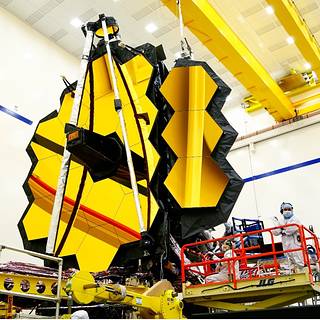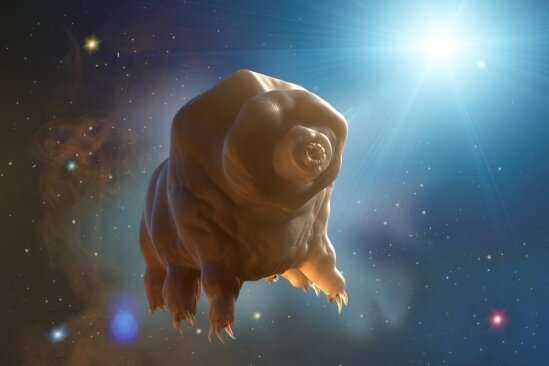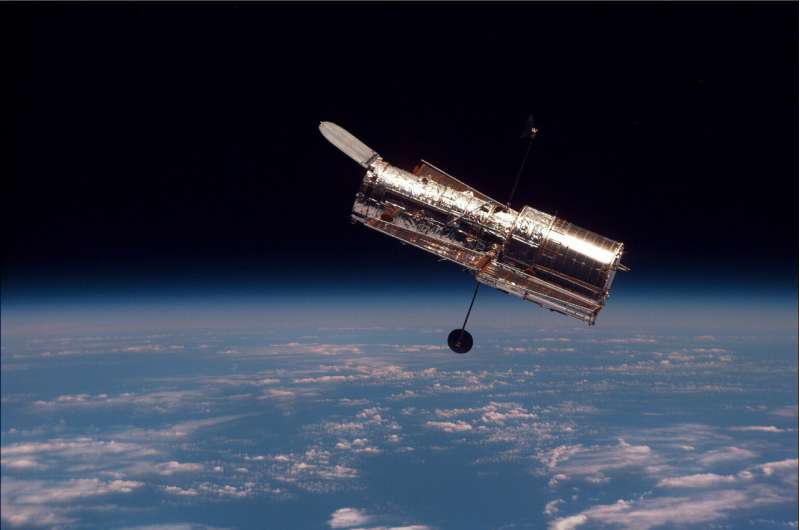
Copernical Team
Why the Webb Telescope doesn't have deployment cameras
 As NASA's James Webb Space Telescope makes its way out to its intended orbit, ground teams monitor its vitals using a comprehensive set of sensors located throughout the entire spacecraft. Mechanical, thermal, and electrical sensors provide a wide array of critical information on the current state and performance of Webb while it is in space.
A system of surveillance cameras to watch deplo
As NASA's James Webb Space Telescope makes its way out to its intended orbit, ground teams monitor its vitals using a comprehensive set of sensors located throughout the entire spacecraft. Mechanical, thermal, and electrical sensors provide a wide array of critical information on the current state and performance of Webb while it is in space.
A system of surveillance cameras to watch deplo SpaceX successfully completes first launch of 2022 from Florida
 SpaceX kicked off a surge in launch activity Thursday with the successful launch of 49 of the company's Starlink communications satellites from Florida, heading south along the state's coastline.
Five SpaceX missions may launch in the next month on the southern polar trajectory, flying closer to the Florida coast toward Miami than most launches, according to the U.S. Space Force.
SpaceX kicked off a surge in launch activity Thursday with the successful launch of 49 of the company's Starlink communications satellites from Florida, heading south along the state's coastline.
Five SpaceX missions may launch in the next month on the southern polar trajectory, flying closer to the Florida coast toward Miami than most launches, according to the U.S. Space Force. Loft Orbital extends production agreement with LeoStella
 Loft Orbital Solutions, Inc. (Loft Orbital), a leading space infrastructure-as-a-service provider, and LeoStella, Inc., a specialized satellite constellation design and manufacturing company, have extended their production agreement to secure multiple additional LEO-100 buses from LeoStella. These satellite buses are the latest in a series Loft Orbital has secured from LeoStella.
The satel
Loft Orbital Solutions, Inc. (Loft Orbital), a leading space infrastructure-as-a-service provider, and LeoStella, Inc., a specialized satellite constellation design and manufacturing company, have extended their production agreement to secure multiple additional LEO-100 buses from LeoStella. These satellite buses are the latest in a series Loft Orbital has secured from LeoStella.
The satel FAU scientist aims to ensure microbe-free Mars samples
 The Mars 2020 Perseverance Rover is collecting samples in search of signs of ancient microbial life, which would advance NASA's quest to explore the past habitability of Mars. The samples are set to return to Earth no earlier than 2031, as part of the Mars Sample Return campaign being planned by NASA and the European Space Agency. Before the rover went to space, NASA and its engineers worked har
The Mars 2020 Perseverance Rover is collecting samples in search of signs of ancient microbial life, which would advance NASA's quest to explore the past habitability of Mars. The samples are set to return to Earth no earlier than 2031, as part of the Mars Sample Return campaign being planned by NASA and the European Space Agency. Before the rover went to space, NASA and its engineers worked har Life could be thriving in the clouds of Venus
 by Eric Verbeten for WISC News
Is there life on Venus? For more than a century, scientists have pondered this question. Now, there is renewed interest in Venus as a place that could support living organisms. "We are trying to make the case for exploring Venus and to inspire and inform future missions to collect in situ data with satellites," says Sanjay Limaye, a University of Wisconsin-Madison
by Eric Verbeten for WISC News
Is there life on Venus? For more than a century, scientists have pondered this question. Now, there is renewed interest in Venus as a place that could support living organisms. "We are trying to make the case for exploring Venus and to inspire and inform future missions to collect in situ data with satellites," says Sanjay Limaye, a University of Wisconsin-Madison NASA to host coverage for Webb Telescope's final unfolding
 NASA will provide live coverage and host a media briefing Saturday, Jan. 8, for the conclusion of the James Webb Space Telescope's major spacecraft deployments. Beginning no earlier than 9 a.m. EST, NASA will air live coverage of the final hours of Webb's major deployments. After the live broadcast concludes, at approximately 1:30 p.m., NASA will hold a media briefing. Both the broadcast and med
NASA will provide live coverage and host a media briefing Saturday, Jan. 8, for the conclusion of the James Webb Space Telescope's major spacecraft deployments. Beginning no earlier than 9 a.m. EST, NASA will air live coverage of the final hours of Webb's major deployments. After the live broadcast concludes, at approximately 1:30 p.m., NASA will hold a media briefing. Both the broadcast and med Euroconsult predicts highest government space budgets in decades despite Covid
 Leading space consulting and market intelligence firm Euroconsult has released its highly anticipated "Government Space Programs" report for 2021. The highlight of this year's findings is a continued, even accelerated, volume of governmental investment in the space sector, driven by two major drivers: ambitious space exploration programmes by leading space countries, and rivalries driving the mi
Leading space consulting and market intelligence firm Euroconsult has released its highly anticipated "Government Space Programs" report for 2021. The highlight of this year's findings is a continued, even accelerated, volume of governmental investment in the space sector, driven by two major drivers: ambitious space exploration programmes by leading space countries, and rivalries driving the mi NASA to Host Coverage, Briefing for Webb Telescope’s Final Unfolding
 NASA will provide live coverage and host a media briefing Saturday, Jan. 8, for the conclusion of the James Webb Space Telescope’s major spacecraft deployments.
NASA will provide live coverage and host a media briefing Saturday, Jan. 8, for the conclusion of the James Webb Space Telescope’s major spacecraft deployments. Sending tardigrades to the stars

No longer solely in the realm of science fiction, the possibility of interstellar travel has appeared, tantalizingly, on the horizon. Although we may not see it in our lifetimes—at least not some real version of the fictional warp-speeding, hyperdriving, space-folding sort—we are having early conversations of how life could escape the tether of our solar system, using technology that is within reach.
For UC Santa Barbara professors Philip Lubin and Joel Rothman, it's a great time to be alive. Born of a generation that saw breathtaking advances in space exploration, they carry the unbridled optimism and creative spark of the early Space Age, when humans first found they could leave the Earth.
"The Apollo moon voyages were among the most momentous events in my life and contemplating them still blows my mind," said Rothman, a distinguished professor in the Department of Molecular, Cellular and Developmental Biology, and a self-admitted "space geek."
A mere 50 years have passed since that pivotal era, but humanity's knowledge of space and the technology to explore it have improved immensely, enough for Rothman to join experimental cosmologist Lubin in considering what it would take for living beings to embark on a journey across the vast distance separating us from our nearest neighbor in the galaxy.
Hubble passes 1-billion-second mark

On Jan. 1, 2022, NASA's Hubble Space Telescope officially passed the one-billion second mark.
Hubble was deployed from the Space Shuttle Discovery's cargo bay on April 25, 1990, making it one-billion seconds (over 31 years) since Hubble began operating. For more than three decades, Hubble has provided us with groundbreaking scientific discoveries and iconic images of space.
Hubble's first one-billion seconds included five astronaut servicing missions to replace and repair components of the telescope, and more than 1.5 million scientific observations and counting. We can only imagine what discoveries the next one-billion seconds will bring as new telescopes like the recently launched James Webb Space Telescope and the future Nancy Grace Roman Space Telescope build upon Hubble's discoveries and work together with Hubble to expand our understanding of the universe.
Explore further

